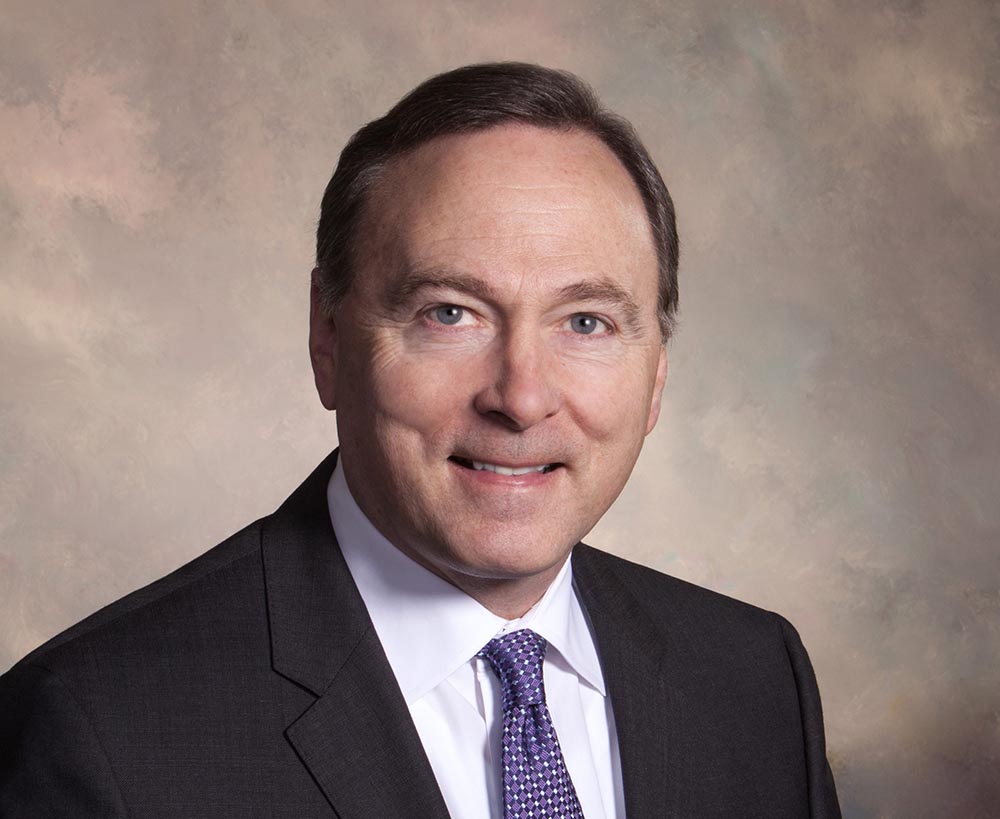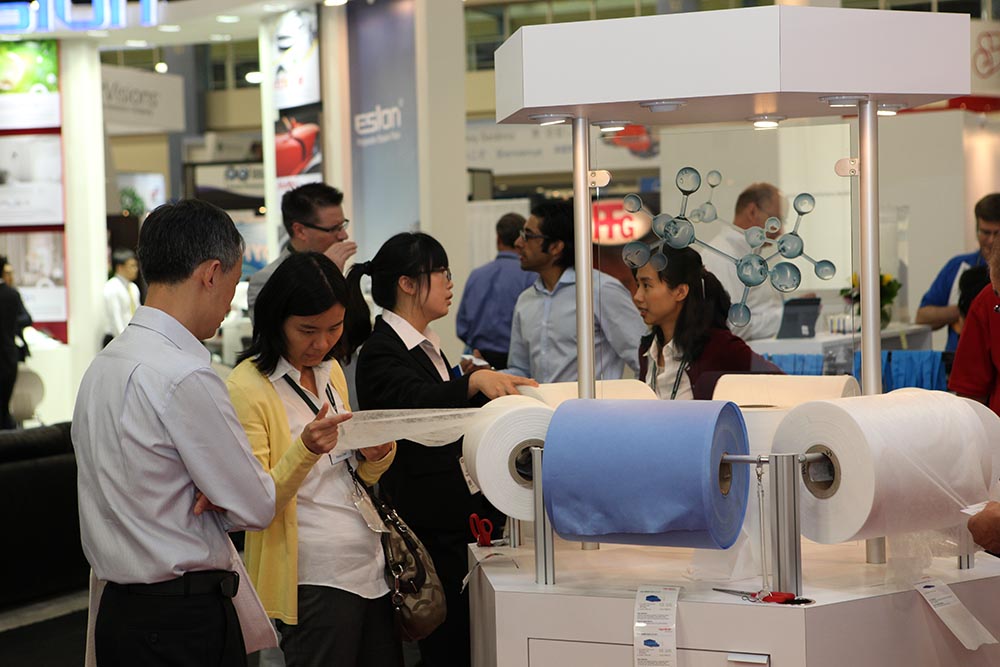“We see the filtration segment continuing to grow at GDP plus 3-4 percent, as there is increasing knowledge about the benefits of ‘clean and pure’ and of the negative consequences of the converse.”

IDEA19 will bring thousands of thought leaders in the nonwovens industry together for four days of training, exhibits and special programs, March 25-28, in Miami Beach, Fla. (Image courtesy of INDA.)
Q: IDEA is returning to Miami Beach this year. How do you feel about that and what are some of the key features of IDEA19 that attendees should not miss?
A: We are delighted to be going back to Miami Beach and the Miami Beach Convention Center. This venue is ideally suited for our event, as the floor size and newly renovated meeting rooms are just what our exhibitors are looking for. We occupy the entire site. And we will be recognizing INDA’s 50th Anniversary at the Monday night Welcome Reception, a celebration not to be missed.
This year we are adding some training course opportunities to add value for our attendees’ travel spend. We will have six short courses covering essential topics in nonwovens. Attendees can sign up for individual courses or choose one of three tracks to save some money. All three tracks start with the five-hour Making Nonwovens course. The Absorbent Hygiene track includes a three-hour course on diapers and incontinence products, followed by three-hour course on femcare and incontinence. The Filter Media track supplements Making Nonwovens with a three-hour course on Air Filter Media and a three-hour course on Liquid Filter Media. The Wet Wipes track supplements Making Nonwovens with a three-hour course on Wet Wipes.
All of these courses are led by experienced industry instructors, including Terry Young, a former Proctor & Gamble Research Fellow in Hygiene, and Behnam Pourdeyhimi, Ph.D., of North Carolina State University and the Nonwovens Institute. These educational opportunities are great add-ons to the value attendees get from IDEA.
In addition, we will have the IDEA19 Achievement Award presentations, recognizing the best new product introductions in five categories since the last IDEA in 2016. We have a great slate of candidates, narrowed to three finalists in each category from a list of over 50 submissions. We will also provide awards for Lifetime Achievement in the Nonwovens Industry, and the Entrepreneur Achievement Award.
Market Data sessions will be presented each morning prior to the show floor opening, highlighting key economic trends in the three major nonwoven areas of North America, Europe/MENA, and Asia. These sessions will be led by experts from each region.
Our aim is provide outstanding value to a range of constituents in our industry.

Q: Looking at the US nonwovens industry overall, what are some of the challenges and opportunities that are top of mind to you at this time?
A: While our industry is quite healthy, there are always challenges. Being a capital-intensive industry, our business leaders need certainty in the near- to mid-term future in order to comfortably make the capital investments needed to stay cost effective and current. Recent regulatory relief and tax reform have helped in this area, but trade issue resolution through tariffs have raised some uncertainties. This, along with the challenge of passing through cost increases, have presented some headwinds in an otherwise healthy business environment.
As for opportunities, there remain many, as nonwovens are engineered materials that can be tailored to provide solutions for product design challenges, and there are always new product design challenges needing solutions. One area that will get attention going forward is the increasing concern about plastics in the environment. Given that much of the nonwovens industry relies on oil-based polymers for much of its fiber formation, we will get increasing attention so we need to be proactive in developing alternative materials and being open to recycled/recovered materials. The European Union directive on single-use plastics has given us a wake-up call on this issue.
Q: What application areas of nonwovens represent the most significant areas of growth?
A: We see the filtration segment continuing to grow at GDP plus 3-4 percent, as there is increasing knowledge about the benefits of “clean and pure” and of the negative consequences of the converse. The automotive/transportation sector remains strong as nonwoven/engineered materials provide benefits in fuel economy, size reduction, noise abatement and thermal control. Growth in these two segments is not only driven by organic growth, but in taking share from other materials and the use of composite materials, with the inclusion of nanofibers and composite media technology in filtration and layered materials in transportation.
And we see higher value materials being developed for sophisticated medical and wound care applications, including extremely high-value and cutting-edge implantables. I expect these and perhaps some new areas emerging as high growth segments with technology advances on several fronts, and material science technology leads as a solution.
Q: What are some important technological developments in the nonwovens sector that impress you?
A: In technology we are seeing are greater increase in process controls that have traditionally been in more-capital-intensive industries, such as pulp and paper, making their way into nonwovens. Increased usage of sensors and closed-loop feedback systems improve quality, uniformity, and productivity. Some of these are up for IDEA Achievement Awards in the equipment area.
Q: Nonwovens have prospered now for 50 years. What do you attribute this to?
A: Consumers rely on nonwovens in their day-to-day lives, yet generally do not know what a nonwoven is as companies market end-products to meet the consumers’ needs. For example, in absorbent hygiene, product components are largely nonwovens, but people only identify with the diaper or femcare or incontinence product, not the materials they are made with. So we are not “top of mind” to consumers.
Additionally, this is an extremely fragmented industry with numerous varied end-uses using numerous fibers and polymers delivered in multiple constructs. This is also a growing industry with continuous innovation and numerous growth drivers offering steady revenue. This attracts attention both within the industry and with companies outside the industry, including the financial sector. This had led to another trend shaping the industry – mergers and acquisitions. We see current nonwoven producing companies buying others; we see private equity players getting into nonwovens; and we see companies outside of nonwovens getting in, such as paper industry companies like AstenJohnson, Domtar, Glatfelter, Neenah and Schweitzer-Mauduit.
The nonwovens industry is a continuously evolving, dynamic and diverse industry. I am constantly surprised by the usage of nonwovens in novel ways and in the expanding universe of companies involved in the nonwovens industry. So we are pleased to host this wonderful industry at this year’s IDEA event, and look forward to many more.
For more information about IDEA19, visit idea2019.com


